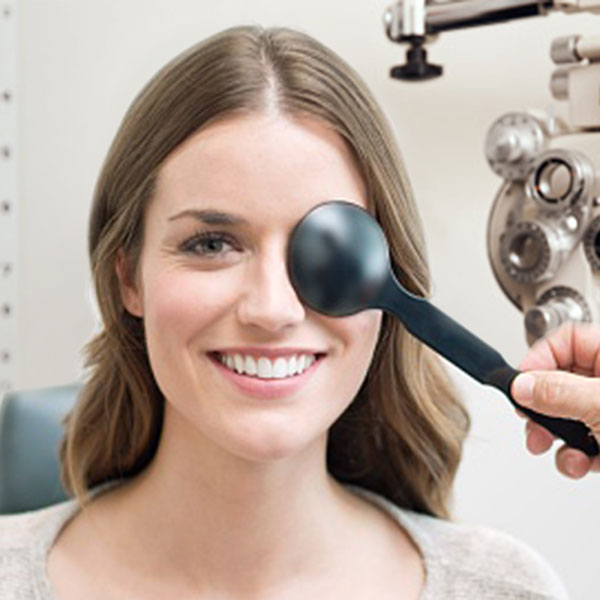The diabetes and vision loss connection
People with diabetes are at risk of developing eye diseases, including – but not limited to – diabetic retinopathy, macular edema (which often develops alongside diabetic retinopathy), cataracts, and glaucoma. Each of these diseases can lead to vision loss. Fortunately, early diagnosis and treatment can go a long way toward protecting eyesight.

Diabetic retinopathy is the leading cause of vision loss or even blindness in working-age adults.
High blood sugar damages blood vessels in the retina, a light-sensitive layer of cells in the back of the eye. Damaged blood vessels can swell and leak, and new tiny blood vessels begin to grow. These can bleed into the middle part of the eye, blocking vision or causing high pressure in the eye. This is diabetic retinopathy, and it usually affects both eyes.
Symptoms of eye disease include:
- Blurry vision – often, this is temporary and improved with lowered blood glucose levels.
- Dark or empty areas.
- Spots or dark shapes in your vision (floaters).
- Trouble seeing colors.
- Vision loss.
Risk factors for diabetes-related eye diseases
The risk factors for diabetic retinopathy include:
- Type 1, type 2, or gestational diabetes (diabetes while pregnant), and prediabetes. The longer the person has diabetes, the more likely they are to develop diabetic retinopathy.
- High blood pressure, blood sugar levels, or cholesterol.
- Smoking.
- Being of a certain race or ethnicity: Black, of Latin American descent, and Indigenous peoples have higher risks.
Prevent or delay eye diseases
Typically there are no warning signs of diabetes-related eye disease or vision loss, but finding and treating diabetic retinopathy early can reduce the risk of blindness by 95%.
There are some things you can do to protect your vision and lower the chances of experiencing vision loss and blindness:
- Get a dilated eye exam at least once a year to catch any problems early when they are most treatable. If you’re a member, sign in to your secure account and search results will include providers in your health plan.
- Get active. Physical activity protects your eyes and helps you manage diabetes.
- Ask your doctor for a referral to diabetes self-management education and support (DSMES) services. People who lack diabetes education are twice as likely to get diabetic retinopathy compared to those with diabetes who received some form of diabetes education.
- Maintain target-range blood sugar levels. Over time, high blood sugar damages blood vessels in your eyes and can affect the shape of your lenses, causing blurred vision.
- Maintain target-range blood pressure and cholesterol levels.
- If you smoke, quit. Stopping smoking lowers your risk for diabetes-related eye diseases and improves overall health.
If you are a Capital Blue Cross member
If you are a member with diabetes, prediabetes, or just want to improve your health, visit the diabetes resource page.
Interested in health and wellness information? Visit the Capital Journal for more articles.
This is not medical advice and is not intended to be a substitute for professional medical advice, diagnosis, or treatment. Always seek the advice of your physician or other qualified health care provider with any questions you may have regarding a medical condition or treatment. The information provided is meant for a general audience. Capital Blue Cross and its affiliated companies believe this health education resource provides useful information but does not assume any liability associated with its use.
Sources:
The information provided is meant for a general audience. Capital Blue Cross and its affiliated companies believe this health education resource provides useful information but does not assume any liability associated with its use.